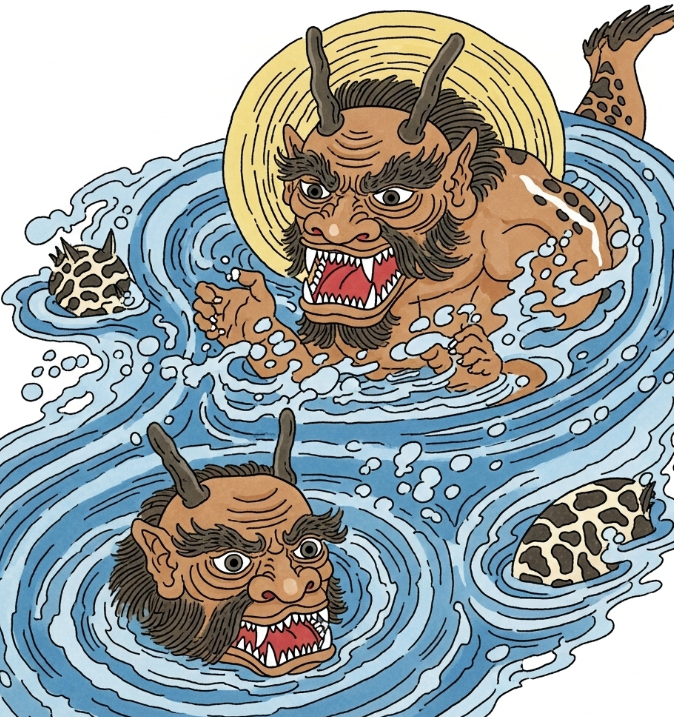Among the many supernatural creatures that populate Japanese folklore, the Kappa stands out as one of the most curious and enduring. Known as a river demon or water sprite, the Kappa (河童, literally “river child”) is both feared and mischievously admired in the folklore of rural Japan. Its legend reflects deep cultural beliefs about nature, water spirits, and the thin line between prankster and monster.
The Appearance and Nature of the Kappa
Traditionally depicted as a child-sized creature with green, scaly skin, webbed hands and feet, and a turtle-like shell on its back, the Kappa is instantly recognizable by the small depression or dish (sara) on top of its head. This dish holds water — the source of the Kappa’s life force and power.
The Kappa’s duality is at the heart of its myth: it is a trickster that delights in causing trouble, yet it also plays an important role as a water spirit, enforcing respect for rivers, ponds, and irrigation canals.
Pranks and Perils
Kappa are notorious for their pranks. In old stories, they hide in rivers waiting to startle horses, drag unsuspecting swimmers underwater, or even challenge humans to sumo wrestling matches. While many of their tricks are harmless mischief, some tales turn darker, warning that Kappa can drown people, particularly children, and are said to crave shirikodama — a mythical ball believed to reside inside a person’s anus, which the Kappa tries to extract.
These cautionary tales served as a way to instill fear and respect for dangerous bodies of water, keeping children away from deep rivers and ponds where drowning accidents were a real threat.
Appeasement and Trickery
Despite their unsettling habits, Kappa can be outwitted. Japanese folklore offers clever methods for dealing with them. Because Kappa are obsessed with politeness, they cannot resist bowing back if bowed to. This simple act causes the water in their head-dish to spill, rendering them powerless and forcing them to retreat or beg for mercy.
People would also leave cucumbers — said to be the Kappa’s favorite food — as offerings to appease them and protect swimmers and livestock. To this day, the cucumber roll (kappa maki) in sushi restaurants pays playful tribute to this part of the legend.
Kappa as Water Deities
Beneath the mischief, the Kappa embodies the complex relationship between humans and nature. They are an expression of the vital but dangerous power of water, personifying both its life-giving and destructive qualities. In some regions, Kappa were even worshipped as minor water deities, and villagers would pray to them for rain, abundant harvests, or protection from floods.
Over time, the terrifying aspects of the Kappa softened, evolving into more comedic figures in popular culture, children’s stories, and mascots. They still appear in festivals and folklore, reminding new generations of the old wisdom: respect nature’s forces, lest they play tricks on you.
From riverbanks to modern media, the Kappa remains one of Japan’s most iconic yokai — a mischievous guardian of the waterways and a timeless symbol of the delicate balance between humans and the natural world they inhabit.







